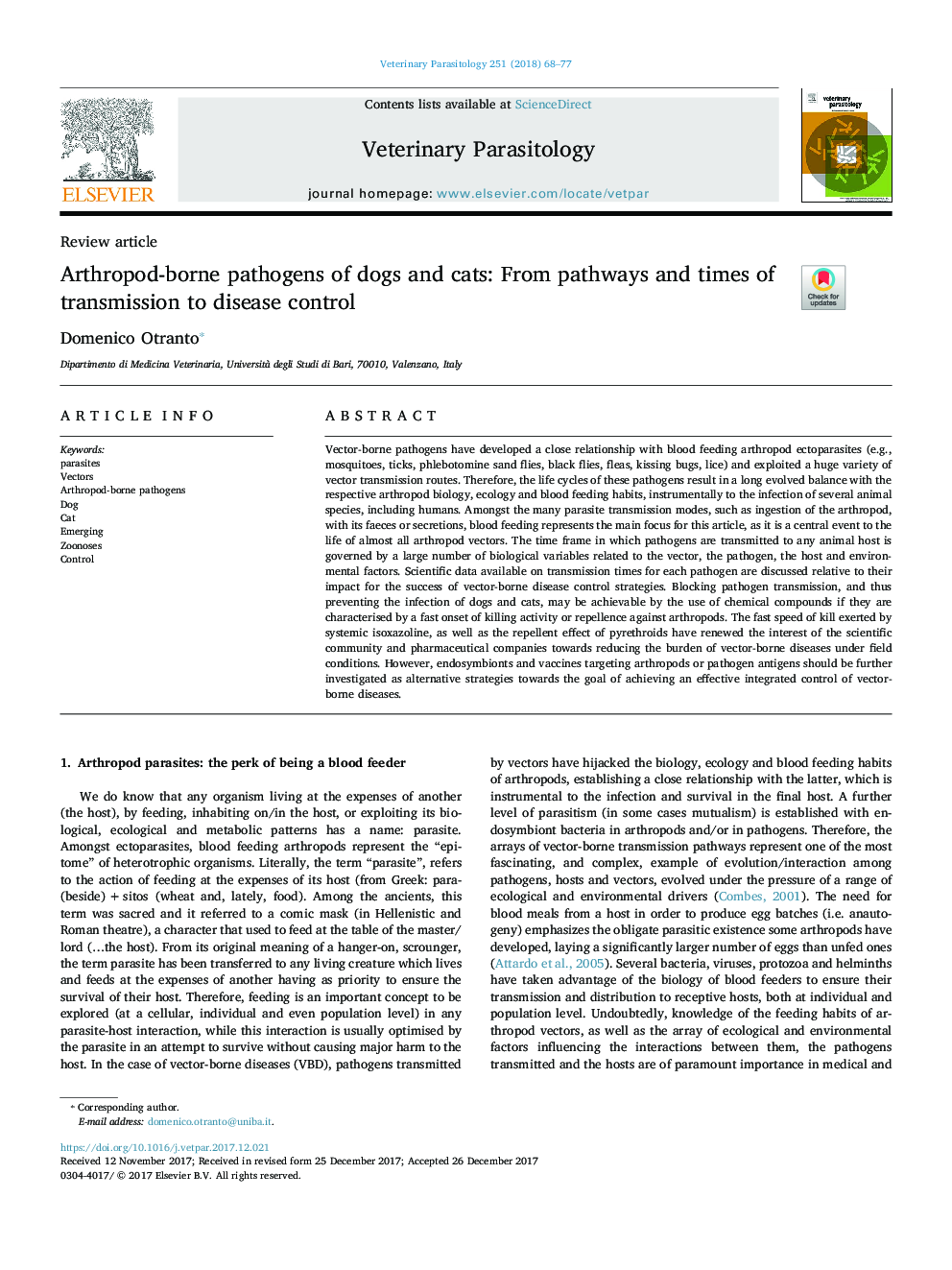| کد مقاله | کد نشریه | سال انتشار | مقاله انگلیسی | نسخه تمام متن |
|---|---|---|---|---|
| 8506126 | 1555625 | 2018 | 10 صفحه PDF | دانلود رایگان |
عنوان انگلیسی مقاله ISI
Arthropod-borne pathogens of dogs and cats: From pathways and times of transmission to disease control
ترجمه فارسی عنوان
پاتوژن های منتقله از دست رفته سگ ها و گربه ها: از مسیر ها و زمان های انتقال به کنترل بیماری
دانلود مقاله + سفارش ترجمه
دانلود مقاله ISI انگلیسی
رایگان برای ایرانیان
کلمات کلیدی
انگل ها، بردارها، پاتوژن های منتسب به پرتویی، سگ، گربه، در حال ظهور، زونوزها، کنترل،
موضوعات مرتبط
علوم زیستی و بیوفناوری
علوم کشاورزی و بیولوژیک
علوم دامی و جانورشناسی
چکیده انگلیسی
Vector-borne pathogens have developed a close relationship with blood feeding arthropod ectoparasites (e.g., mosquitoes, ticks, phlebotomine sand flies, black flies, fleas, kissing bugs, lice) and exploited a huge variety of vector transmission routes. Therefore, the life cycles of these pathogens result in a long evolved balance with the respective arthropod biology, ecology and blood feeding habits, instrumentally to the infection of several animal species, including humans. Amongst the many parasite transmission modes, such as ingestion of the arthropod, with its faeces or secretions, blood feeding represents the main focus for this article, as it is a central event to the life of almost all arthropod vectors. The time frame in which pathogens are transmitted to any animal host is governed by a large number of biological variables related to the vector, the pathogen, the host and environmental factors. Scientific data available on transmission times for each pathogen are discussed relative to their impact for the success of vector-borne disease control strategies. Blocking pathogen transmission, and thus preventing the infection of dogs and cats, may be achievable by the use of chemical compounds if they are characterised by a fast onset of killing activity or repellence against arthropods. The fast speed of kill exerted by systemic isoxazoline, as well as the repellent effect of pyrethroids have renewed the interest of the scientific community and pharmaceutical companies towards reducing the burden of vector-borne diseases under field conditions. However, endosymbionts and vaccines targeting arthropods or pathogen antigens should be further investigated as alternative strategies towards the goal of achieving an effective integrated control of vector-borne diseases.
ناشر
Database: Elsevier - ScienceDirect (ساینس دایرکت)
Journal: Veterinary Parasitology - Volume 251, 15 February 2018, Pages 68-77
Journal: Veterinary Parasitology - Volume 251, 15 February 2018, Pages 68-77
نویسندگان
Domenico Otranto,
